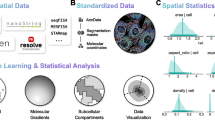Abstract
The aim of this study was to investigate the functional properties of the promoter of the protein phosphatase 1α catalytic subunit. Luciferase plasmids with different fragments of the rat catalytic subunit of the protein phosphatase 1α promoter ranging from –3.7 kbp to –59 bp were transiently transfected into cells by the calcium-phosphate precipitation method. The promoter activity was determined in the absence and presence of inotropic agents which influencing the cAMP-depending pathway. The basal transcriptional activity decreased at fragment –124 bp and shorter fragments. To identify regions of regulatory importance we investigated the cAMP-dependent influence on the transcriptional activity. Stimulation of the complete promoter region with forskolin (1–100 μM) for 6 h led to a concentration-dependent decrease of transcriptional activity. Moreover, regions shorter than 3.7 kbp were inhibited by forskolin (10 μM). Short time stimulation (10 min) with forskolin (10 μM) increased the transcriptional activity of only the 3.7 kbp fragment. The effects were antagonized by Rp-cAMPS, a specific antagonist of protein kinase A, indicating cAMP-dependent effects. The results provide evidence for cAMP-dependent regulation of the protein phosphatase 1α promotor.
Similar content being viewed by others
References
Wera S, Hemming BA: Serine/threonine protein phosphatases. Biochem J 311: 17–29, 1995
Cohen P: Novel serin/threonine phosphatases: Variety is the spice of life. Trends Biochem Sci 22: 245–251, 1997
Herzig S, Neumann J: Effects of serine/threonine protein phosphatases on ion channels in excitable membranes. Physiol Rev 80: 173–210, 2000
Neumann J, Eschenhagen T, Jones LR, Linck B, Schmitz W, Scholz H, Zimmermann N: Increased expression of cardiac phosphatases in patients with end-stage heart failure. J Mol Cell Cardiol 29: 265–272, 1997
Bristow MR, Ginsburg R, Minobe W, Cubicciotti RS, Sageman WS, Lurie K, Billingham ME, Harrison DC, Stinson EB: Decreased catecholamine sensitivity and beta-adrenergic receptor density in failing human hearts. N Engl J Med 307: 205–211, 1982
Hasenfuss G: Alterations of calcium-regulatory proteins in heart failure. Cardiovasc Res 37: 279–289, 1997
Müller FU, Bokník P, Horst A, Knapp J, Linck B, Schmitz W, Vahlensieck U, Böhm M, Deng MC, Scheld HH: cAMP response element binding protein is expressed and phosphorylated in the human heart. Circulation 92: 2041–2043, 1995
Nomoto K, Shibata N, Kitamura K, Mizuno Y, Kikuchi K: Molecular cloning and analysis of the 5´-flanking region of the rat PP1α gene. Biochim Biophys Acta 1309: 221–225, 1996
Knapp J, Bokník P, Linck B, Lüss H, Müller FU, Nacke P, Neumann J, Vahlensieck U, Schmitz W: The effect of the protein phosphatase inhibitor cantharidin on â-adrenoceptor-mediated vasorelaxation. Br J Pharmacol 120: 421–428, 1997
Müller FU, Eschenhagen T, Reidemeister A, Schmitz W, Scholz H: In vivo β-adrenergic stimulation leads to biphasic regulation of Gia-2 gene transcriptional activity in rat heart. J Mol Cell Cardiol 26: 869–975, 1994
Feldman AM, Cates AE, Veazey WB, Hershberger RE, Bristow MR, Baughman KL, Baumgartner WA, Van Dop C: Increase of the 40,000 mol wt. pertussis toxin substrate (G protein) in the failing human heart. J Clin Invest 82: 189–197, 1988
Neumann J, Schmitz W, Scholz H, von Meyerinck L, Döring V, Kalmár P: Increase in myocardial Gi-proteins in heart failure. Lancet 2: 936–937, 1988
Ungerer M, Böhm M, Elce JS, Erdmann E, Lohse MJ: Altered expression of beta-adrenergic receptor kinase and beta 1-adrenergic receptors in failing human heart. Circulation 87: 454–463, 1993
Danielsen W, von der Leyen H, Meyer W, Neumann J, Schmitz W, Scholz H, Starbatty J, Stein B, Döring V, Kalmár P: Basal and isoprenaline-stimulated cAMP content in failing versus nonfailing human cardiac preparations. J Cardiovasc Pharm 14: 171–173, 1989
Rohlff C, Ahmand S, Borellini F, Lei J, Glazer RI: Modulation of transcription factor Sp1 by cAMP-dependent protein kinase. J Biol Chem 272: 21137–21141, 1997
Walker WH, Fucci L, Habener JF: Expression of the gene encoding transcription factor cyclic adenosine 3´,5´-monophosphate (cAMP) response element-binding protein (CREB): Regulation by folliclestimulating hormone-induced cAMP signaling in primary rat Sertoli cells. Endocrinology 136: 3534–3545, 1995
Author information
Authors and Affiliations
Corresponding author
Rights and permissions
About this article
Cite this article
Linck, B., Bokník, P., Knapp, J. et al. Functional properties of the rat phosphatase 1α promoter. Mol Cell Biochem 223, 123–129 (2001). https://doi.org/10.1023/A:1017926713989
Issue Date:
DOI: https://doi.org/10.1023/A:1017926713989




